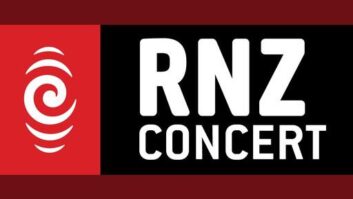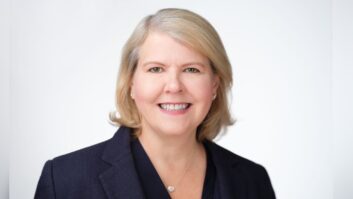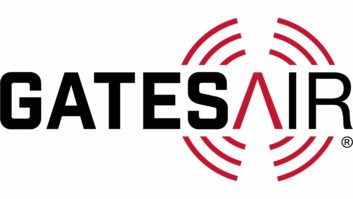No one wants to run afoul of the FCC during an inspection. The Society of Broadcast Engineers and the National Association of Broadcasters are offering their members a new way to help protect broadcast licenses and assets.
They released a self-inspection guideline for FM radio stations this spring, and an AM version was released in early September. There is also a TV version. Guides for LPFMs, translators/boosters and distributed television services are planned.
The guides are available via download from the member sections of the websites of the SBE and NAB.
The FCC stopped publishing self-inspection checklists in 2003, but rules and policies have continued to change since then. These guides are designed to help stations as well as contract inspectors in the Alternative Broadcast Inspection Program in evaluating a station’s compliance with FCC rules and regulations. In some states, stations that participate in the ABIP can receive a three-year exemption from routine FCC inspections.
Rules violations can lead to delays in the FCC’s processing of an application, penalties including substantial monetary forfeiture, a shorter license authorization or even loss of a station’s license, according to the document.
Ched Keiler, chair of the SBE committee that created the guides, said the documents provide an up-to-date, standardized guidance to help broadcasters comply. Sections of the 71-page SBE FM Broadcast Station Self-Inspection Guide or SBE FM Guide, cover a variety of topics, from authorizations and programming related rules to EAS, public inspection file and an array of technical requirements. There’s a glossary and a helpful guide to common abbreviations. Key information is linked to relevant text in the Electronic Code of Federal Regulations. The SBE further enriched the guide by providing helpful “Recommended Practice” notes in a series of callout boxes.
SBE and NAB emphasize that these guides have not been approved or endorsed by the commission. They don’t cover every regulation, nor are they intended as legal advice or opinions. But they reflect a great deal of work and expertise. Stations can use them to assess compliance with regulations most likely to pose an enforcement risk.
Ched Keiler spoke with us about the initiative.

Radio World: What is involved in putting together an ambitious document like this?
Ched Keiler: The industry has long recognized that there was a need to replace the original FCC Check List documents. They fulfilled their role back in the 1990s and early 2000s but simply grew out of date as the industry moved on.
The Society of Broadcast Engineers had been discussing the deficiencies of these documents for some time. SBE has long been known for its role in education of broadcast engineers. It made a lot of sense to take on a project of this magnitude.
The SBE Board of Directors decided in April 2022 to proceed with this project. They placed the project under its Government Relations Committee, which I chair. We knew this was going to be an ambitious project so I selected members for a newly formed subcommittee and we worked diligently to bring this project into fruition. There were many man hours spent on the project, along with significant monetary cost to SBE. I want to thank all those who partnered to bring this project to where it is today.
The guides are meant to be used by anyone who wants to help bring their facilities into compliance.
RW: Whose input did you rely upon?
Keiler: I relied heavily on the committee that I mentioned. We met frequently to hammer out what the guides should say. I also formed a relationship with NAB, which reviewed and supplied comments to the documents. We also relied upon third parties for review and comments.
RW: How did you decide what topics to include?
Keiler: We initially followed what was outlined in the prior FCC Check List documents. We did add and delete material as appropriate. We also came up with the concept of Recommended Practice or RP, which is basically a recommendation that a station should follow but are not required to. We decided not to label these “Best Practices” because there are so many variables that may or may not apply in an individual situation or station.
RW: If a radio engineer were transported from the year 2003 to today and picked up this guide, what would they notice that’s different from back then?
Keiler: I think a radio engineer would see considerable changes that have occurred in the rules over time. For example, digital HD Radio or IBOC was in its infancy and many of the FCC rules that govern that service were not in place with the earlier FCC ABIP guides.
The SBE FM Guide was created to assist in providing guidance on how to comply with both the IBOC standard and the FCC rules and regulations regarding proper operation and compliance.
RW: Are there one or two sections you feel will be the most useful?
Keiler: There are many that can be beneficial to the broadcast engineer. One instance that comes to mind concerns FM modulation. I can remember the days of “loudness wars” with FM modulation in which one station competes with another to over modulate in order to sound louder to the listener. I recently came across this situation in a major market that was pointed out to me by one of my clients. He was wondering why the signals in his market sounded so poor.
As it turned out, the stations were competing among themselves to be the loudest in the market and thus grossly overmodulating. We cover this issue in the SBE FM Guide. If the stations in that market had followed the FCC regulations and the SBE FM Guide’s Recommended Practice, this situation would not have occurred.
RW: Were there any particularly difficult aspects of the process?
Keiler: I was very concerned that we were not creating new rules that didn’t exist within the FCC rules and regulations while maintaining the thoroughness and integrity of the guides. The committee had numerous conversations about the granular scope of each section to assure that we did not create new rules.
RW: Do you have two or three tips that you wish more stations would follow?
Keiler: I would recommend that readers of the guides strongly adhere to the areas of the guides that speak about FCC compliance. I also think that readers should consider the Recommended Practices and try to deploy them to the best of their ability within their operations.







